Life in Mangeshi Realty: Artifacts for Grinding and Spinning Yarn
Life in Mangeshi Realty: Artifacts for Grinding and Spinning Yarn
By: Francis K. Khosho
The landscape of the village of Mangeshi has always been prime realty that has allowed for generations of families to thrive and prosper from its abundance. Villagers have traditionally been avid farmers and self-sufficient due to their talents in pottery, milling, spinning and grinding. Food and sustenance came through cattle breeding and the richness of agriculture the land had to offer.
Throughout history, families were clustered within settlement groups, all of whom had their own fixed dwelling spaces throughout the village. The homes of residents were fairly close to one another and not scattered broadly, creating a parent commune, or, village. This small community all shared together in the agricultural tasks, living from the land and helping one another to thrive and ultimately survive.
The Mangeshi Mountains were located to the south (Tori) and the rolling hills (Zori) were to the north. The hills were alive with wooded oak trees and bushes, lush green valley and verdant meadows covered by grass. The plains (Dashta) were a sweeping land mass that did not change in elevation and stretched for miles. The soil was incredible and richly fertile making it suitable for cultivation and food production.
These small satellite pockets are still visible across Mangeshi land, as well as the effects of the graves among them: Qokhta (5500 – 4800 BC), Qalaji (Assyrian period 911 – 609 BC), Karesyatha (Sannacherib period 705 BC – 681 BC), Kovili (Assyrian period and Sasanian dynasty 224 – 651 AD), Keri d’ Pati, Demolished Mangeshi, Banan, Shekhorki, Qsel, Beneyatha, Betersha, Klyi D’ Matha, Marga Zora, Bedani, Kera D’ Khapri, Khoreyatha, Jaro. See Dr. Abdalla Rabi “Mangesh Township of Beauty and Giving/ Anthropological Study”. Detroit, 2022. Also, Bathre Zori.
Recently, in February of this year, Werda Qolo posted an article entitled, “Architectural Design of Mangeshi Houses and its Content in the Time of Our Ancestors” on both Mangesh.net and the Mangeshi diaries webpage. Adeel Hanna also posted incredible photos of artifacts found in the remains of these landmarks in the outskirts of modern day Mangeshi.
The article and photos were highly commended by some of our supportive community members, Hana Shamon, David Rabi and others. The information as presented led to a discussion about the purpose of these artifacts. For example, what were they used for specifically? Why were the holes necessary? David Rabi presented some good ideas – maybe they were being used as door sockets (Qolta D’ Tara), where the pointed end of the door side was put inside these holes, which allowed the door to open either inward or outward. It was also suggested that perhaps they were used for the irrigation of water, to close and open the flow of water (Karesta D’ berki) directed from the ponds (Berki). Or, the question was raised, what would be the purpose of the cylindrical shape of the stone? Were they being used for knocking wheat (khashola)?
On April 27, 2021, the respected Mayor of Mangeshi, Hanna Kalo, sent me some photos through messenger. Since then, I have delved into research that could potentially explain their purpose. I began to study, compare and analyze many photos of similar artifacts found in literature referencing this area. The information was not enough to draw comparisons. So, I myself began to ask many questions. First, how old were these artifacts? Based on their age, how did they translate into or resemble what the needs of our people were in those days? In my opinion, it made the most sense that these tools were being used to grind grain and other food products. I believe they also may have been used to spin yarn for textile production.
Grinding (Khshala):
Grinding (Khshala) is an ancient form of technology found all over the world that was used for rubbing/grinding grain and other substances in order to condense material into a finer version of itself. Grinding was especially necessary to process wheat and barley grains into flour, a key staple in making bread.
Throughout my research, I was actually amazed at how similar Mangeshi artifacts were to those found all over the ancient world. And it was quite apparent that Mangeshi realty and the contributions of tools created to use our land, have been largely ignored in archaeological reports and historical studies. My hope is that this article and others discussing this conversation, will bring this issue to the forefront and perhaps result in the attention of the archaeological and ethnographical communities to explore this.
Here is what I found on the historical significance of similar artifacts. During the Neolithic and Paleolithic periods, hunter-gatherers used stones as a combination pestle grinder and millstone to grind down grains and nuts for food consumption. They used the rounded end of the stones to bash grains against another rock, thereby breaking them down (Khashola). The millstone (Karesta) consisted of a pair of flat, round stones. One millstone remained stationary, while the other rotated above it in a circular motion. The grain was poured through a small hole in the upper stone, which radiated from the center of the stationary millstone and emerged on the edge as it was ground to powder. There were also mills with elongated stones that were moved back and forth on a similarly sized base. The evidence of such mills is very well documented in our ancient land between two rivers, ancient Egypt and during Biblical times (Exodus 11:5, Jeremiah 25:10 and Deuteronomy 24:6).
Ancient grinding tools similar to those found in Mangeshi realty.
Mangeshnayi while farming uncovered such grinding stones, though they were no longer in their original position. The pictures illustrate similarities to the artifacts mentioned above (See photos below).
Last October, my wife and I had the opportunity to visit the country of Costa Rica. While there, our travel guide took us to a local cocoa farm and told us that we were going to be making chocolate from scratch, in the ancient traditional Costa Rican way. We began by grinding cacao beans on a “metate” (incredibly similar to the artifacts referenced above, found in Mangeshi land). Grinding the cacao beans on the metate, drew out the natural cacao butter until the beans turned into a thick, glossy liquid. When the guide asked for volunteers, my wife, Bernadette, enthusiastically volunteered and began grinding. Using the skills from her childhood in Mangeshi (Khshala Ko Khasholta), the beans cracked and crunched under her grinding stone (Shendokhta). We then added banana into the chocolate in order to assist the texture. It was the most exquisite chocolate I’d ever tested; buttery, creamy and indulgent.
Ancient Costa Rican metate for grinding cacao beans. Bernadette (my wife) grinding cacao beans using her skills from back in the days in Mangeshi (Khshala Ko Khasholta).
Spinning Yarn:
Artifacts related to both looms and textiles do not usually stand the test of time like stone or metal do. Most items used to spin and weave yarn were made of wood and fiber and have since decayed. However, the weights used in drop spindles to spin fiber into yarn and weigh down the wrap fibers in weaving loom were normally made from material like stone and have thus been uncovered over time (see photos below).
Archaeologists have evidence that Neanderthals had fiber technology as early as 41,000 – 52,000 years ago and, similarly, evidence regarding its existence during the Paleolithic period (28,000 – 20,000 years ago). The loom weight has been found as far back as Neolithic Europe, the Aegean area and the historical near East, dating back to 7000 BCE. This early archaeological evidence shows that humans have had the technology to spin fiber into yarn for a long time.
Loom weights were tied at the bottom of threads to create an even tension, similar to those found in Mangeshi.
Weights used in drop spindles and looms were found during the farming of Mangeshi realty. Those found were in many different shapes, ranging from discoid, cylindrical, conical and round. The loom weights were tied at the bottom of threads to create an even tension, giving the weaver greater control.
The loom weights from ancient Mangeshi were found in both stone and clay material. The loom weights made from clay also had a hole punched in the top and likely gave the Mangeshnaya weaver greater control over its shape, size and weight, improving upon the weaving itself. The clay was also presumably less laborious than drilling holes into rocks or pebbles from the river.
In the pictures of the Mangeshi artifacts, I also noticed a bobbin (Bakra) made from clay. There is significant clipping around one side and portions missing from the top, likely as a result of typical weathered damage over the years. But, for the most part, it seems to still be in fair condition and identifiable. This finding is the most common evidence for textile production in Mangeshi. These tools show evidence of string production, cloth production, ropes (Kholi), bags (Kwneyi, Chanyatha, and Tkhari), mats etc. This type of manufacture was an indispensable part of their daily life.
Wooden spindles (Tasheya) were also used. They were ancient spherical or disk-like objects that fit onto the rod to increase and maintain the speed of the spin. These objects were used to hand-spin yarn in preparation for weaving. The disks could be made of materials like stone, wood or fired clay. The spindle was a round stick with a tapered end. It had a hook, groove, or notch at the top to guide the yarn. The spindle would form and twist fibers such as wool and cotton into yarn. Our parents and grandparents’ generations even continued to use the wood spinning methodology through the sixties.
Another tool that has continued use in Mangeshi is the wool comb (Maserqa D’ Amra) with a double row of steel tines crafted from wood.
After trimming off the wool from sheep or goats, villagers would wash the wool with cold water, squeeze the water out and lay the wool to dry. The next step was picking or teasing out the clumps in order to smooth out the wool. Then there was carding: combing the wool so that all fibers go in the same direction. This would make the wool light and fluffy and ready for spinning in order to turn the wool into yarn.
Also used in textile production, were silkworms and the flax plant. The flax plant was one of the oldest plants that grew in northern Iraq before 5000 B.C. (See Salvatore Gaspa, “Textiles in the Neo- Assyrian Empire” March 2018). Silkworm farming was also a practice that began over 5,000 years ago and was around in Mangeshi till the end of the nineteenth century. Mulberry leaves were the sole source of nutrition for growing silkworms and Mangeshnayi farmers used to feed them mulberry leaves, once in the morning, in the midday and once in the evening. This lends itself as evidence that they had the technology to spin fibers and is why they cultivated the flax plant (Ketana) and mulberry silk fiber, turning both into yarn.
As we continue to uncover these types of findings, it will help us all re-evaluate the understanding of our village. These artifacts are rare and precious items found in our homeland and tied to those who lived before us. They are immensely useful in learning about the past and how people in Mangeshi used our realty to survive. It gives us glimpses into what their daily lives were like and how these small satellite villages interacted and collaborated with one another.
When I saw these artifacts, I thought of my mother and all the women of Mangeshi; the hands that have done the work and kept our deep history alive. I always want to cry looking at these artifacts, thinking of the sacrifice and resilience of our history. Can you imagine how many hours of grinding grains and other resources it took to wear out these rocks? How many stories were told over these rocks during the countless hours of labor that went into the work being accomplished?
In this simple study, I do believe that these Mangeshi artifacts were most certainly from the Ancient Near East and Neolithic periods based on the comparison of other artifacts in existence at this time. Mangeshi most certainly has historical breath and has been around for thousands of years. We must keep these conversations going and continue to explore our history. Our village is so rich in antiquity and there is much pride and honor to be found in that.
I am sending you all this bowl of chocolate made from scratch in Costa Rica with the ancient metate, as a gift of love to you and a symbol of the rich history of our world.
Blessings to you for a wonderful holiday season.
Francis K. Khosho, California
الترجمة العربية
الحياة في آقر منكَيشي؛ لُقى اثارية للجرش وغزل الأنسجة [١]
بقلم فرنسيس ك خوشو
ترجمة: حنا شمعون
الطبيعة حوالي قرية منكَيشي كانت دوماً الآقر الرئيسي الذي جعل الأجيال التي سكنتها تنمو وتزدهر بسبب وفرة مواردها. وعلى مر الزمن كان سكنة المنطقة فلاحين نهمين للمزيد وفي نفس الوقت غير مستوردين بل مكتفين بمؤهلاتهم في الصناعات الخزفية ، الطحن، الات الغزل، و جرش الح*بو-ب، فقد كانوا يحصلون على طعامهم وقوتهم من خلال المنتجات الحيوانية و ما تقدمه لهم هذه الأرض الزراعية الخصبة.
على مرّ التاريخ التمت العوائل في تجمعات سكنية، ليكون لها مساكن ثابتة في آقر القرية الحالية. البيوت لم تكن متباعدة بل كانت نسبياً قريبة الى بعضها البعض مؤدية الى نواة سكنية او القرية. في هذا المجمع السكني تَشارك الجميع في الواجبات الزراعية، ليكسبوا عيشتهم من الأرض الزراعية مساعدين بعضهم البعض في النمو والبقاء.
الآقر بين جبل منكَيشي، الواقع جنوب القرية الحالية ، والتلال الملاصقة ( زوري) الواقعة شمال القرية زاخر بشجرات البلوط والأعشاب، والمروج الخضراء .
السهول ( دشتا) ضمن الآقر كانت اراضي شاسعة منبسطة من غير مرتفعات. التربة كانت عجيبة في خصوبتها مؤهلة للزراعة وإنتاج الغذاء.
لا تزال هذه المستوطنات( مجتمعات) الصغيرة مرئية في جميع أنحاء عقار (آقر) منكَيشي، فضلاً عن آثار القبور بينها. يمكن ان نسمي المجتمعات :
قوختا ( ٤٥٠٠– ٤٠٠٠ ق.م.) ، قلّاجي ( ٩١١– ٦١٢ ق.م.)، كَرسياثا ( فترة سنحاريب ٧٠٥ – ٦٨١ ق.م. )، كوفلي ( الفترة الآشورية و والسلالة الساسانية ٢٢٤– ٦٥١ ب.م )، كَري دبتي، منكَيشي الخرابة، بنن، شيخوركي، قَصّل، بيناثا، بيطرشا، مركَا زورا، بداني، كيرا دخبري، خورياثا، جرو، أخيراً باثر زوري. ( انظر كتاب د. عبدالله رابي مانكَيش بلدة الجمال والعطاء، دراسة انثروبولوجية ، ديترويت ٢٠٢٢)
مؤخراً في شهر شباط من عام ٢٠٢٢، السيد وردا قلو انزل مقالة عنوانها ” البناء الهندسي لبيوت منكَيشي ومحتوياتها في زمن اسلافنا” ، وذلك في مانكيش. نت و صفحة يوميات مانكَيش. كذلك السيد أديل حنا هو الأخر انزل صور رائعة تظهر لقى أثارية عُثرَ عليها في ضواحي القرية، منكَيشي الحالية.
المقالة والصور ، أثنى عليها جزيلاً بعض الأعضاء من المساندين ومنهم كل من حنا شمعون و دافيد رابي، وآخرون. المعلومات المعروضة ادت الى نقاش حول غرض هذه اللقى الآثارية . على سبيل المثال في ماذا كانت تستعمل بالخصوص، لماذا الثقوب فيها ضرورية ؟ ديفد رابي أبدى بعض الأراء الجيدة فكتب ربما كانت تستعمل في مكابس الأبواب ( قولتا دطرا) حيث النهاية المدببة كانت تدّخل في الثقوب الظاهرة مما كان يسمح للباب ان يفتح من الداخل او الخارج. وهناك من قال إنها كانت تستعمل في الأرواء، لسد وفتح مجرى الماء ( كَرستا دبركي ) في بركة الماء ، وهناك من تسأءل ماهو غرض الشكل الأسطواني للحجر؟ هل كان لأجل دق وسحق ح*بو-ب الحنطة ( خشولتا)؟
يوم ٢٧ نيسان ٢٠٢١ مختار منكيشي السيد حنا كلو المحترم ارسل لي صور اللقى الأثرية عبر المسنجر، ومن ذلك الوقت خضت في بحث جدّي وجئتُ بنتيجة يمكن تشرح الغاية من هذه اللقى الأثرية. بدأت بدراسة و مقارنة مع تحليل صور مماثلة في المؤلفات المنسوبة الى المنطقة. المعلومات لم تكن كافية للمقارنة. لذا بدأت اسأل عدة أسئلة. اولاً كم هو عمر هذه اللقى الآثارية . اعتماداً الى عمرها، كيف يمكن ان نستكشف حاجيات أهلنا في تلك الأيام؟ في رأي انه من الطبيعي ان هذه الألات كانت تستعمل في طحن الح*بو-ب وبقية المنتجات الغذائية. بلا شك انهم كانوا يستعملونها في الغزل الدوراني للمنسوجات.
الطحن ( خشالا):
الطحن ( خشالا) هو شكل قديم من تقنية صنع الغذاء في كافة انحاء العالم. الطحن كان يستعمل لسحق الح*بو-ب او المواد الأخرى من اجل تحويلها الى مسحوق . عملية السحق( طخانا ) كانت ضرورية لتحويل الحنطة والشعير الى الدقيق ، وهي عملية اساسية في عمل الخبز.
من خلال بحثي كان عجبي إن اللقى الأثرية في منكَيشي تشابه تلك التي وجدت في أنحاء العالم القديم، وبدا واضحاً لي ان آقر منكَيشي ومساهمة الآلات المصنوعة لاستعمالها الأرض، نالها الأهمال في تقارير الآثاريين والدراسات التاريخية. املي ان مقالتي هذه ومناقشة الآخرين التي ترد عليها سوف تجلب المسألة الى الواجهة، لربما تنال اهتمام المؤسسات الآثارية والاثنوغرافية كي يستكشفوها.
ها اني اقدم الذي وجدته في الأهمية التاريخية للقى اثارية مشابهة. خلال العصر الحجري الحديث والعصر الحجري القديم ، الانسان استعمل الحجارة المركبة مثل المدقة( خشولتا) و الطاحنة( كَروستا) لطحن الح*بو-ب والمجففات من اجل تحضير الأطعمة. استعملوا النهاية المدورة للحجر الضارب على القعر المدور للحجر الآخر لسحق الح*بو-ب ( في منكَيشي تسمى خشولتا) وكذلك استعملوا الطاحنة المكونة من حجرين مدورين ومستويين أحدهما ثابت والأخر يدور ( في منكَيشي تسمى كَرستا) حيث كانت الح*بو-ب تسكب خلال الفتحة المدورة في الحجر الدوّار. اما التدوير كان باليد بواسطة خشبة منبثقة من الحجر الدّوار. باستمرار الدوران كانت الح*بو-ب تسحق وتتحول إلى أحجام أصغر وحسب الرغبة. اثبات استعمال هذه الطواحين هي موثقة في الآثار المكتشفة في بلاد ما بين النهرين وفي مصر وكذلك من خلال العهد القديم ( الخروج؛ ١١:٥، ارميا؛ ٢٥:١٠، والتثنية ؛ ٢٤: ٦)
المنكَيشيون أثناء الحراثة اكتشفوا الحجارة المستعملة في الطحن، لكنها لم تكن في مكانها الأصلي. الصور المرفقة تظهر تشابه اللقى الآثارية المذكورة ( انظر إلى الصور).
في شهر تشرين الأول ، زوجتي وأنا سنحت لنا الفرصة لزيارة كوستا ريكا . خلال وجودنا هناك أخذنا الدليل السياحي الى مزرعة محلية للكاكاو واخبرنا بأننا سوف نصنع الشوكلاته من نقطة الصفر بطريقة كوستا ريكا التقليدية القديمة. بدأنا بسحق حبات الكاكاو على كا يسمونه ” ميتاتي” ( مشابه بشكل لا يصدق الى اللقى الأثارية المذكورة اعلاه، والتي وجدت في آقر منكَيشي ) . سحق حبات الكاكاو في ال ميتاتي أدى الى خروج زبدة الكاكاو الى ان تحولت الحبات الى سائل ثخين ولمّاع. وعندما سأل الدليل عن متطوع تقدمت زوجتي برناديت برغبة عارمة وبدأت عملية السحق مستعملة مهارتها في هذا المضمار منذ ايام الطفولة في منكَيشي ( خشالا كَو خشولتا)، الحبات تَصَدعت وسُحِقت تحت حجرة الطحن ( شندوختا ) . ثم اضفنا الموز على الشوكلاته لمساندة البنية. لقد كانت النتيجة أروع شوكولاته ذقتها؛ زَبِدة دسمة وسهلة المضغ.
المغزل :
اللقى الاثارية المتعلقة بالنول والمنسوجات عادة لا تقاوم اختبار الزمن مثل الحجر او المعدن. أكثر الالات المستعملة في الغزل ونسج الخيوط هي خشبية الصنع او مصنوعة من الألياف، ولذا فإنها تتحلل وتتلف. لكن الثقل المستعمل لجذب الخيوط في نسيج النول عادة كان مصنوع من مواد مختلفة لكن في الغالب من الحجر كما اُكتُشف مؤخراً. انظر الصور.
الآثاريون أثبتوا ان انسان نياندرتال كان له تقنية الألياف، حدود ٤١،٠٠٠ –٥٢،٠٠٠ سنة خلت. وامثلة وجودها ظهرت خلال العصور القديمة قبل (٢٨،٠٠٠ – ٢٠،٠٠٠ ). الثقل في النول وجد في العصر الحجري الحديث في أوربا، منطقة بحر ايجة، والمناطق التاريخية للشرق الادنى العائدة الى تاريخ ٧٠٠٠ ق.م.
هذه الشواهد الآثارية تثبت ان الأنسان كان له تقنية غزل الألياف في المغزل قبل فترة طويلة من الزمن.
الأثقال المستعملة في الجذب المدور ضمن وجدت خلال الحراثة في آقر منكَيشي. هذه الآلات وجدت بأشكال مختلفة قرصية، اسطوانية، مخروطية، مثلثة، و مستديرة . ثقل النول كان يربط في أسفل الخيط كي ينتج الشد الجاذبي ويعطي للحائك الحرية في السيطرة.
اثقال النول وجدت في منكَيشي القديمة بشكل الحجارة او الطين المجفف. الثقل المصنوع من الطين المجفف كان فيه ثقب في الأعلى مما كان يعطي الحائك المنكَيشي سيطرة اكبر على الشكل، الحجم، والوزن. اختيار الطين المجفف بدل الحجر كان للسهولة حيث ان ثَقب الحجر او حصوة النهر امر صعب ويحتاج الى مهارة خاصة.
في الصورة المرفقة ل اللقى الآثارية من منكَيشي لاحظتُ بكرة مصنوعة من الطين وهناك قص واضح حول طرف ويبدو ان ثمة جزء مفقود من الطرف الآخر. الجزء المفقود يؤل الى الاندثار عبر الزمن بسبب العوامل المناخية. ولكن بصورة عامة هذه اللقى الطينية تبدو بهيئة جيدة بحيث يمكن معرفتها. هذا الاستكشاف هو أفضل إثبات لوجود انتاج المنسوجات في منكَيشي. هذه الآلات هي براهين في انتاج الخيوط، الملابس، الحبال، الحاويات ( كونيي، جنياثا، خراري )، فرش ( صدركياثا )، الخ
هذا النوع من الصناعات كان جزء من حياة المنكيشين اليومي ولم يكن بمقدورهم الاستغناء عنها.
المغزل الخشبي ( تشيا) كانت مستعملة ايضاً وهي آلة قديمة مصنوعة من الخشب. وهي على شكل كروي او قرصي مربوط بعود طويل لزيادة سرعة الغزل. هذه الآلة كانا تُدَور باليد لانتاج الخيوط المستعملة في الحياكة . القرص كان مصنوع من مواد مثل الحجر ، الخشب او الطين المجفف بالنار. المغزل كان على شكل عود طويل مدور ونهايته مدببة. وفي قمة القرص كان هناك صنارة واخدود او حز ليقود اتجاه الخيط.
هذه الألة كانت مستعملة حتى بداية الستينات من قبل أمهاتنا وجداتنا.
آلة اخرى كانت معروفة في منكَيشي هي مشط الصوف ( مسرقا دأمرا) التي فيها صفّان من اشواك الحديد مغروزة في قاعدة خشبية.
بعد جز الصوف من الخرفان او الماعز، القرويون كانوا يغسلونها في الماء البارد ثم يعصرون الصوف من الماء ويجففونه. الخطوة التالية كانت انتقاء العُقَد من اجل جعل الصوف متجانس النعومة. ثم يأتي دور التمشيط : تمشيط الصوف كي تكون الألياف بإتجاه واحد ، وهذا الأمر كان يجعل الصوف اخف، ارق و حاضر للغزل من اجل تحويله الى خيط.
كذلك كان الحرير يستعمل في إنتاج النسيج . الحرير الذي تنتجه دودة القز . والكتان المنتج من نبات الكتان كان كذلك يستعمله المنكَيشيون في النسيج. نبات الكتان هو من اقدم النباتات التي كانت تنمو في شمال العراق ٥٠٠٠ ق.م. ( انظر سلفاتوري كَاسبا، ” النسيج في الامبراطورية الآشورية الحديثة ” آذار ٢٠١٨) . مزارع حرير دودة القز كانت معروفة قبل أكثر من ٥،٠٠٠ سنة وكانت هذه المزارع كانت موجودة في آقر منكَيشي الى نهاية القرن التاسع عشر. أوراق شجيرة التوت كانت المصدر الوحيد لانتاج غذاء دودة القز ولذا كان المُزارع المنكيشي يطعم دودة القز أوراق هذه الشجيرة ثلاث مرات في اليوم صباحاً، ظهراً ومساءاً. هذا يثبت ان المزارع المنكَيشي كان له تقنية لغزل الألياف ولذا كانت الياف نبتة الكتان وحرير دودة القز تحول باستعمال هذه التقنية إلى خيوط لأستعمالها فيما بعد في شتى الأغراض.
ونحن ما زلنا نكشف هذه المكتشفات فانها بلا شك سوف تؤدي الى إعادة تقييم مفهومنا عن قريتنا. هذه اللقى الآثارية هي مواد نادرة وثمينة وجدت في موطننا وهي مرتبطة باولئك الذين سكنوا الموطن قبلنا. وهي بشكل كبير مهمة لمعرفة الماضي وكيف ان اهل منكَيشي استغلوا الآقر من اجل البقاء. هذه المخلفات تعطينا لمحة عن حياتهم اليومية، كيف كانت، وكيف ان هذه المجمعات السكنية كانت تتداخل وتتعاون مع بعضها البعض.
عندما رأيت هذه اللقى الآثارية خطرت على بالي امي وكل النساء في منكَيشي؛ الأيادي التي عملت الشغل وحفظت تاريخنا كي يبقى حياً فينا. كلما نظرت الى هذه الأثار أردت أن ابكي في أعماقي متأملاً التضحية واالصبر الذي تحلى بهما اجدادنا عبر تاريخنا.
هل يمكن للقاريء ان يتأمل كم من الوقت أخذ سحق الح*بو-ب وما هو تأثيره في إستهلاك وسوفان هذه الأحجار؟ كم من القصص حكيت خلال الساعات اللامعدودة من العمل لانجاز الشغل المطلوب ؟
في هذه الدراسة البسيطة اعتقد ان اللقى الآثارية التي وجدت في آقر منكَيشي تعود العهد الحجري الحديث للشرق الأدنى القديم وذلك من اجراء المقارنة مع لقى آثارية وجِدتْ في الوقت الحاضر. منكَيشي بالتأكيد لها نَفَس تاريخي وهي متواجدة لآلاف من السنين.
علينا الأستمرار في هذه المناقشات وعلينا استكشاف تاريخنا. قريتنا ثرية ومؤثرة في ثقافة العصور وهناك الكثير من الفخر والتشريف نجده في هذه الثقافة.
اني ارسل لكم جميعاً صحن من الشكولاته مصنوع من نقطة الصفر في كوستا ريكا في متاتي قديم كهدية حب ومحبة لكم وكرمز للتاريخ الثري في عالمنا.
التبريكات لكم في موسم الأعياد الرائعة،
فرنسيس ك. خوشو، كاليفورنيا
[١] استعملت هنا كلمة آقر— وترجمتها العربية عقار— كما يعرفها المنكَيشي وهي ترجمة لكلمة realty والمعني بها هو الأراضي الزراعية وغير الزراعية التي هي تابعة لملكية قرية منكَيشي. (المترجم)

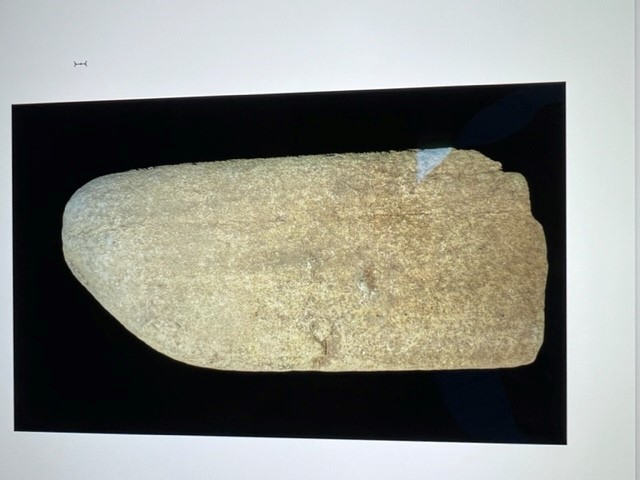
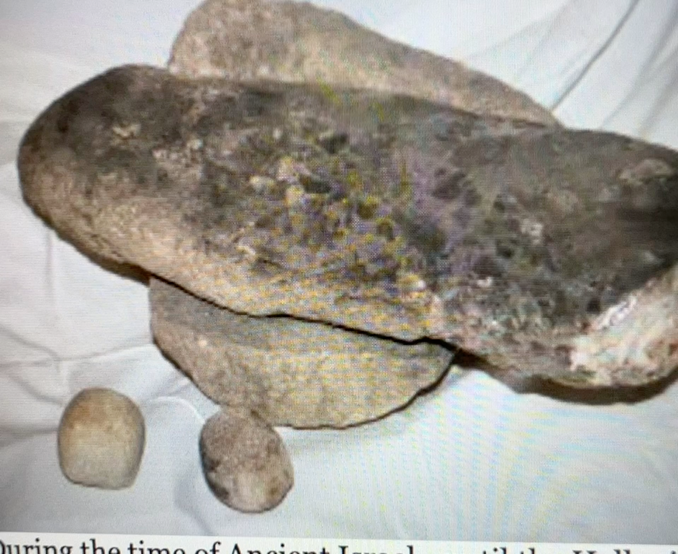
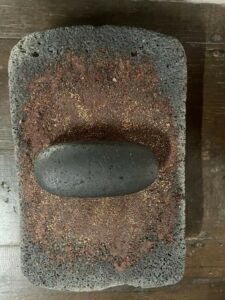
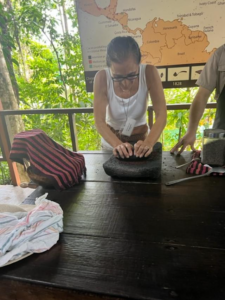
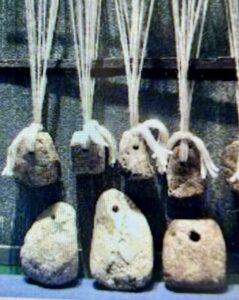
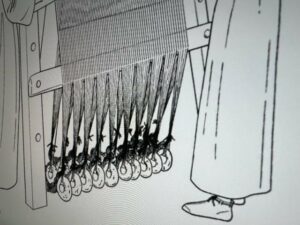
الباحث المبدع فرنسيس خوشو موكا المحترم
تحية
في البدء اقدم لك وللعائلة الكريمة ازكى التهاني والتبريكات بمناسبة عيد الميلاد المجيد
مقالة رائعة عن بعض التبعات الاثارية المكتشفة في مانكيش من قبل الاهالي وما دار من مناقشات حولها لتثبتها هنا في مقالتك الرائعة.
اخي فرنسيس ، المنطقة المحيطة ببلدتنا مانكيش سبق وكما ذكرت في كتابي عنها اجرت وزارة الاعلام والاثار العراقية سابقا كشف للمواقع الاثرية فيها وفي عموم الناحية ولكن بقت دون تنقيب اي دون الحفر للوصول الى اللقى الاثرية او البناء وما شابه من الاثار في باطن الارض، ويبدو ذلك لعدم استقرار المنطقة امنياً او عدم وجود مخصصات مالية للتنقيب في مجمل البلاد لان العملية تتطلب اموالا ضخمة لتصرف على الاختصاصيين والعمال والتخطيط والاجهزة وغير ذلك.
في رايي ، ان يبادر الاستاذ اديل حنا مدير بلدية مانكيش لعرض ما اكتشفوه الاهالي على اثر البناء وشق الطرق من لقى اثرية الى مديرية اثار دهوك لاجل اجراء الدراسة العلمية عليها من حيث عمرها والفترة الزمنية لها ووظيفتها الاقتصادية والعمرانية، اذ لا يمكن احد ان يجتهد ان لم يكن من المختصين لتقدير مواصفاتها حيث الاثاريين لهم مقاييسهم ومنهجيتهم العلمية لتشخيص مواصفات اللقى الاثرية من مختلف جوانبها. فالتنسيق مع مديرية الاثار امر ضروري لغرض حفظها في متحف صغير في البلدة واجراء الدراسات عنها.
كما من خلال مقالتك المفيدة القيمة هذه اناشد الاخ اديل والمسؤليين الرسميين وغير الرسميين في البلدة للتنسيق مع مديرية الاثار و هي ايضا ستحدد فيما اذا المناطق التي توظفها البلدية للاعمار هي مواقع اثرية ام لا ،لكي لا يتم البناء عليها لانها ستطمر تحت العمران ، وعليه اذا تم تحديدها كاثرية ،يتم تركها وتسييجها لحين اجراء التنقيبات العلمية الاثارية عليها.
تسلم على هذا الاهتمام الرائع الذي نبهنا للاهتمام بما تركه الاجداد منذ العهود القديمة من الاثار في بلدتنا العزيزة مانكيش .
محبتي وخالص احترامي